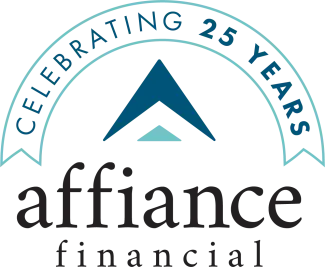
Navigating Job Changes: A Guide to Managing Your 401(k) Plan
What’s Included:
- Why your 401(k) matters during job changes
- Understanding your 401(k) options
o Leave your 401(k) with the current provider
o Roll your 401(k) into a new employer’s plan
o Roll your 401(k) into an IRA - Final thoughts: Don’t let your 401(k) get lost
Changing jobs is a common part of most people’s career journey. Whether you're pursuing new opportunities or considering retirement, one critical aspect to consider is the management of your 401(k) plan.
During a job change early in my career, I left my 401(k) plan at its original provider. I figured it made sense to wait until I became eligible for my new company’s 401(k) plan, and then roll it into my new plan. During that short timeframe, my former employer switched to a new plan administrator, and I was unable to access my account. What I thought was a convenient choice turned into worry, and a significant amount of time and energy tracking down and transferring my old 401(k) plan.
The coincidental timing of my former employer’s plan administrator change makes this a somewhat extreme example, but if that happened to me over a period of months, imagine what might happen if you left your 401(k) dormant for years.
The decision of what to do with your 401(k) plan after you leave a job is important. And it becomes even more important – and complex – as you age. It is crucial to understand all of your options, and the pros and cons associated with them.
The Options
When changing jobs, there are a few different options to consider with your 401(k) plan. You can leave your 401(k) plan with the current provider, roll your 401(k) plan into a new employer’s retirement plan, or roll the 401(k) plan into an IRA. There are pros and cons to each, and it’s important to weigh your options carefully.
Leave your 401(k) with the current provider:
Pros
- This is a convenient choice if you don’t want to spend time rolling your account to a new plan or an IRA.
- If you are satisfied with the plan’s investment options and maintain a diversified portfolio, it may make sense to leave the account as is.
Cons
- Whether you make multiple job changes during your career or time simply passes and it’s not at the forefront of your mind, it’s very easy to forget about an old 401(k) plan.
According to Capitalize, a company that specializes in 401(k) rollovers, as of May 2023, one in four (25%) 401(k) plans have been left behind or forgotten ($1.65 trillion in assets). This is up from one in five (20%) 401(k) plans in May 2021.
If you decide to leave your 401(k) plan with the previous employer, you will need to track the account regularly to handle all administrative activities. This includes keeping your beneficiary designations up to date, ensuring the asset allocation is aligned with your investment objective and overall portfolio, maintaining a record of the account, checking to review new investment options, and staying current with the plan provider.
If you also have a 401(k) plan with your new employer, you will be responsible for managing two plans.
- If you have a low account balance and are not proactive about moving your account, the decision may be taken out of your hands.
If your balance is less than $1,000, your former employer can send you a check for the account balance.
If you are under age 59 ½, you will be subject to income taxes and a 10% penalty unless you roll the funds into an IRA within 60 days.
If the balance is more than $1,000 and less than $5,000, the employer can move the funds to an IRA with a provider of their choosing.
Transfer the old 401(k) plan to a new employer’s 401(k) plan:
Pros
- Generally speaking, it’s easier to manage one or two accounts as opposed to multiple accounts. Your retirement savings become easier to track and maintain by consolidating 401(k) plans.
- If you consolidate your 401(k) assets into a single plan and leave your job in or after the year you turn age 55, you can withdraw funds before age 59 ½ without incurring a penalty (known as the Rule of 55). However, you will still be subject to ordinary income taxes on the distributions. The Rule of 55 only applies to the 401(k) plan of the employer you just left.
Cons
- All of your savings (not just those accumulated at the new job) are subject to the new 401(k) plan’s expenses, options, and rules.
Additionally, the new employer may change aspects of the plan, such as fees, investment options, or the plan administrator, and it will affect your total savings. Once you’ve transferred out, there is no returning to the old plan.
- You may be unaware of 401(k) transfer rules, which may result in extra penalties and taxes. If you don’t request a direct rollover to move your assets straight from custodian-to-custodian, a mandatory 20% tax withholding will apply.
Additionally, if you do not deposit a rollover check within 60 days, you may be subject to income taxes and a 10% penalty if you are under the age of 59 ½.
- Different 401(k) plans have different administrative expenses, investment expenses, investment options, and rules and requirements.
When deciding whether to leave your 401(k) plan where it is or roll it into a new employer’s plan, it is important to review the plan details thoroughly.
Even minor differences can have a major impact on your retirement savings over a long period of time.
Roll your old 401(k) plan into an IRA:
IRAs, or Individual Retirement Accounts, can be self-managed or professionally managed. Choosing to roll an old 401(k) plan into a self-managed IRA presents a lot of the same pros and cons as rolling it into a new 401(k) plan – such as requiring a thorough understanding of the costs, investment options, and rules.
For the sake of argument, let’s explore the pros and cons of rolling your old 401(k) plan into a professionally managed IRA.
Pros
- Rolling your 401(k) into an IRA gives you greater control over your investments. With a 401(k) plan, you are limited to the options offered by your employer. In an IRA, you can select from a wider array of investment options, including stocks, bonds, exchange traded funds (ETFs) and mutual funds. This allows for increased diversification and lower-fee investment options.
- An IRA offers more flexibility in terms of beneficiary designations and estate planning options than a 401(k) plan.
- A professionally managed IRA offers the benefit of proactive and ongoing investment management. Proper professional management helps you stay disciplined, by monitoring your accounts to keep your asset allocation in line with your investment objective.
If you have drifted from your target allocation, your financial planner will rebalance your portfolio to prevent excessive risk exposure or a deviation from your long-term financial goals.
- With a professionally managed IRA, the administrative work is handled by your financial planner, taking the lift off your shoulders.
- As you near retirement, IRAs offer financial planning strategies that 401(k) plans do not. These include:
- At age 59 ½, funds from an IRA can be withdrawn as desired, even if you are still working. This may not be allowed from an active 401(k) plan while you are still working.
- At age 73, you must begin taking your required minimum distribution (RMD). If you have your money in an IRA or multiple IRAs, you can withdraw the aggregated RMD from a single IRA. If you have multiple 401(k) plans, you must satisfy the RMD by withdrawing the properly calculated RMD from each 401(k) plan.
- If you are charitably inclined and age 70 ½ or older, you can make qualified charitable distributions (QCDs) from an IRA, but not from a 401(k) plan. By sending funds directly to charity from an IRA, the donation is excluded from income on your tax return.
Cons
- To have your account professionally managed, you will be charged a management fee.
- 401(k) plans are typically covered under the Employee Retirement Income Security Act (ERISA) and may be federally protected in a lawsuit. But IRA protections are handled by the states and are often more limited.
This means there is a chance your IRA funds could be used to pay damages.
Managing your 401(k) plan during job changes requires careful consideration of your options. Whether you decide to leave your 401(k) with its current provider, transfer it into a new 401(k), or transfer it into a professionally managed IRA, each option comes with its own set of advantages and drawbacks. It's crucial to align your decision with your long-term financial goals.
Each person’s situation is unique, and each person’s solution will be different. But the one thing you can’t do is ignore it. You worked too hard for those retirement savings to risk having them lost or forgotten.
If you’d like to discuss your 401(k) plan options, reach out to your Affiance financial planner today.
The views represented are not meant to be construed as advice. Moreover, no client or prospective client should assume that this content serves as the receipt of, or a substitute for, personalized advice from Affiance Financial, or from any other professional.
Affiance Financial is registered as an investment adviser and only conducts business in states where it is properly registered or is excluded from registration requirements. Registration as an investment adviser is not an endorsement of the firm by securities regulators and does not mean the adviser has achieved a specific level of skill or ability. The firm is not engaged in the practice of law or accounting.
Content should not be viewed as legal or tax advice. You should always consult an attorney or tax professional regarding your specific legal or tax situation. 401(k), IRA, and tax rules are subject to change any time.
All investment strategies have the potential for profit or loss. Asset allocation, rebalancing, and diversification do not ensure or guarantee better performance and cannot eliminate the risk of investment losses.






